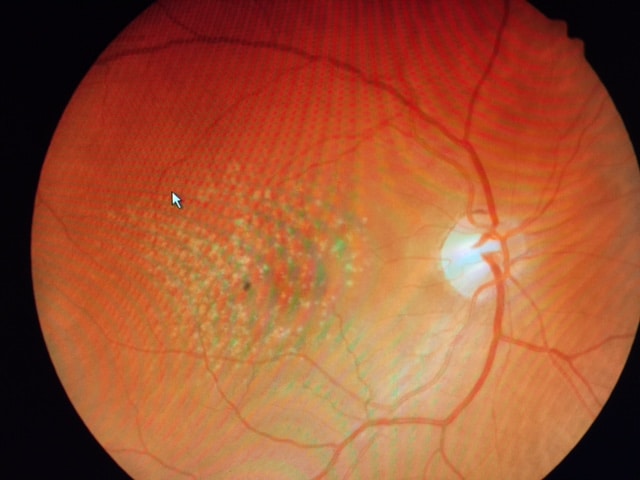VEP, ERG, and EOG
Electrodiagnostic testing is not part of a routine eye examination, but is included here because it is used in cases where there is suspicion of a disease process based on the findings of the routine eye examination. The technology for these specialized tests are not found in every doctor’s office. Testing is most likely to be found at a specialist’s office or a referral center. It requires someone who is trained to administer the test and someone who is knowledgeable in interpreting the results.
Each of these electrodiagnostic tests are used to specifically evaluate different parts of the visual system. The tests are objective, meaning no responses are required on the part of the patient. These are measurements of the neurological electrical activity of the various cells of the visual system.
Electrodiagnostic testing is used to:
* Determine the cause of unexplained loss of visual acuity;
* Establish a diagnosis;
* Monitor the progression of a disease; and
* Test the visual acuity and visual function of a patient that is unable to respond.
1. Visual Evoked Potential (VEP)
Visually evoked potential is also referred to as visual evoked response (VER) and visual evoked cortical potential (VECP). This electrodiagnostic test is measuring the electrical responses to light and pattern stimuli by the brain. VEP is used when the retina appears normal, but there is an unexplained decrease in vision. The visual cortex of the brain and the optic nerve, connecting the eye to the brain, need to be evaluated as the potential source of decreased visual acuity or visual function.
The test is done by placing three electrodes on the scalp of the patient. Light or pattern stimuli are presented to the eye of the patient. The response of the brain is recorded by the instrument as electrical impulses. If a decrease of electrical activity is detected, a problem of the visual cortex of the brain or the optic nerve is suspected.
VEP is most often used for cases of;
* Unexplained decrease in visual acuity;
* Traumatic brain injury;
* Suspected multiple sclerosis (MS);
* Optic nerve disease: and
* Brain lesions along the visual pathway.(1)
It can also be used to measure visual acuity in patients that are unable to respond (infants and disabled adults).
2. Electroretinogram (ERG)
An electroretinogram is used to measure the electrical responses of the photoreceptors and other specialized ganglion cells of the retina. This test requires one electrode placed on the front of the eye and a second one placed on the skin. Light and pattern stimuli are presented to the patient, and the electrical response of the specialized cells of the retina are measured. Measurements can be taken for specific areas of the retina (multifocal ERG) or the retina as a whole. The test can even be modified to test specifically the rod or the cone photoreceptors. A decrease in the electrical response indicates a decrease in the function of the light responsive cells of the retina.
ERG is most often used in cases of:
* Unexplained decrease in visual acuity;
* Diagnosis of inherited retinal diseases, like retinitis pigmentosa, Leber’s Congenital Amaurosis, choroideremia, x-linked retinoschisis, and other rod/cone dystrophies;
* Central nervous system disorders, with ocular involvement;
* Medical drug toxicity;
* Retinal vascular disease;
* Diabetic retinopathy; and
* Glaucoma.(2)
An ERG can often detect retinal eye disease before it becomes apparent.
3. Electrooculogram (EOG)
The electrooculogram is a test used to evaluate visual functioning at the level of the retinal pigment epithelium, which is an important support structure for the retina. Electrodes are placed on the skin around the eyes. The patient is asked to move their eyes back and forth between two light stimuli. First measurements are taken in the dark, then in the light. A decrease in electrical activity indicates a functional problem with the retinal pigment epithelium.
EOG is more specifically used for cases of:
* Bests’ disease, in which the ERG is normal but the EOG will be depressed; and
* RPE dystrophies like Stargardt’s Disease.(3)
References:
1. Visually Evoked Response (VER) or Potential (VEP). LKC Technologies, 2007-2015. Retrieved from http://www.lkc.com/clinical/
2. Electroretinogram (ERG). LKC Technologies, 2007-2015. Retrieved from http://www.lkc.com/clinical/
3. Electro-oculogram (EOG). LKC Technologies, 2007-2015. Retrieved from http://www.lkc.com/clinical/
4. Creel, Donnell J. The Electroretinogram and Electro-oculogram: Clinical applications. Webvision The Organization

